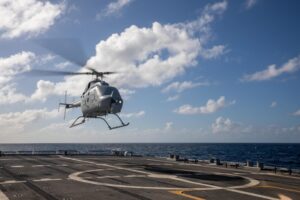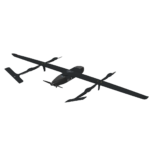
The latest version of the Northrop Grumman [NOC] Fire Scout unmanned helicopter, the MQ-8C, deployed for the first time aboard the Littoral Combat Ship USS Milwaukee (LCS-5) last month, the Navy said on Monday. The MQ-8 Fire Scout is the only unmanned helicopter deployed with the Navy and is meant to deliver intelligence, surveillance, reconnaissance and targeting (ISR&T) capabilities, enhancing situational awareness to extend ship sensor range. The MQ-8C is working aboard LCS-5 while it supports operations in the 4th…

 By
By 











